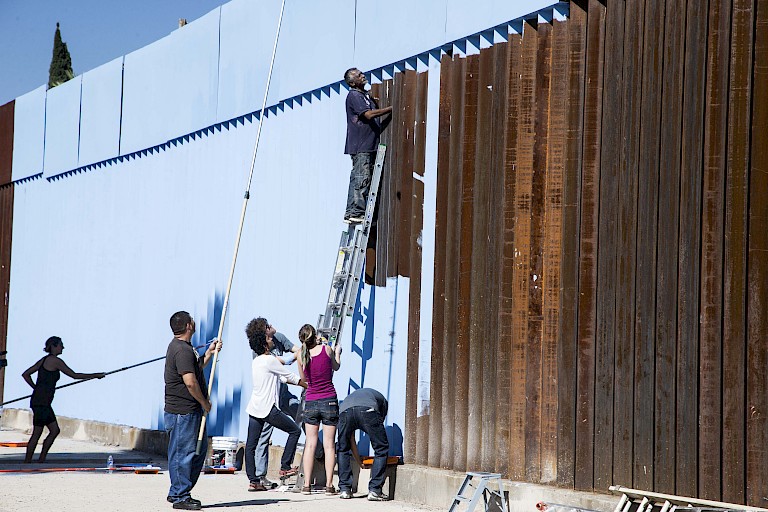



The fence is a harsh boundary to the popular Tijuana beach, a formidable presence both physical and symbolic. Describing the impetus for her action, Fernández explained: “paint has always been my weapon for depicting a different world…Why don’t I paint the reality I want to happen?” During the process, Fernández was stopped by police, but after she described the project, they allowed the work to continue. The section was later painted over, and Fernández returned to re-erase the section of fence. The project has since been embraced and cared for by the local community, with word of the piece spreading to other parts of Mexico. Visitors to the Tijuana stretch of beach now encounter a jarring border fence with a notable gap, a reimagination where Fernández invites viewers to “have a different relationship to space.”
A residency organized by Mary Stephens, Director of Arizona State University’s program Performance in the Borderlands, provided Fernández with the opportunity to propose a new iteration of the project. Following talks and workshops in five Arizona cities, on October 13, 2015, about 40 volunteers joined Fernández on the Nogales, Mexico, side of the border to paint out a section of the fence. Painters ranged from ASU students and professors who traveled hours to participate to passersby who spontaneously joined in, from a border police officer to a deportee.
At the site of the 2015 iteration, just 200 yards to the west of the border checkpoint, the fence crosses a road. The section selected for erasure therefore creates the appearance of a pathway that continues unobstructed between countries, a dramatically different vision from the heavily policed official crossing point nearby.
From an isolated action to a community event, the project will expand once again in 2016, with a planned third version to involve simultaneous painting events to multiply virtual permeations in the border. In this manner, the project will ultimately become a form of triptych, with distinct events exponentially expanding impact and involvement in this re-envisioning of the border.
While many have enthusiastically supported the project, there have also been virulent critics, a reflection of the heightened emotions emanating from a clash of ideologies oriented around the debates, news, and policies of the border.
Taking a step back from divisive arguments, in an email to the online publication Hyperallergic, Fernández spoke to the potential of the project: “The border represents the physical wound of two countries not being able to heal...As immigration becomes more and more of an apparent reality with deeper problems, and intimate stories of despair and frustration get revealed, the general public is more open to listen and talk about it. And art is doing just this, opening a platform to address these issues in new ways, being open, honest, but also imaginative.”



